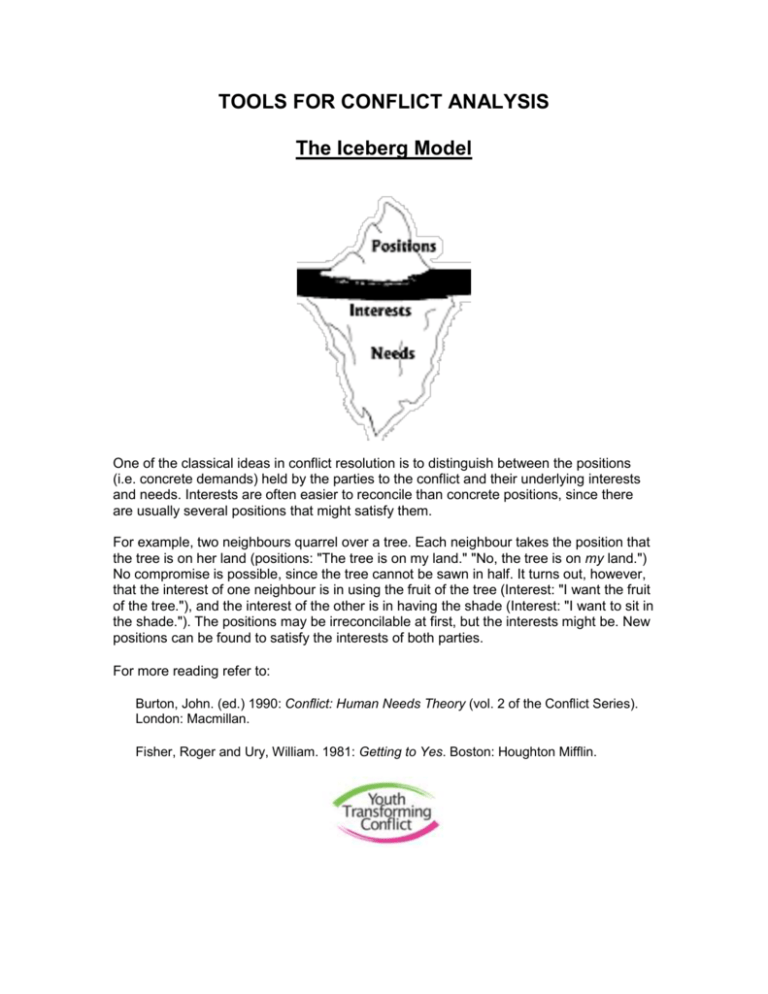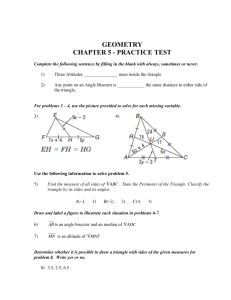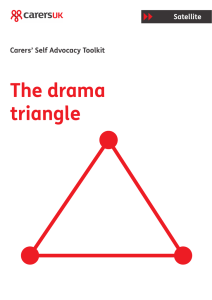The Iceberg Model - Salto
advertisement

TOOLS FOR CONFLICT ANALYSIS The Iceberg Model One of the classical ideas in conflict resolution is to distinguish between the positions (i.e. concrete demands) held by the parties to the conflict and their underlying interests and needs. Interests are often easier to reconcile than concrete positions, since there are usually several positions that might satisfy them. For example, two neighbours quarrel over a tree. Each neighbour takes the position that the tree is on her land (positions: "The tree is on my land." "No, the tree is on my land.") No compromise is possible, since the tree cannot be sawn in half. It turns out, however, that the interest of one neighbour is in using the fruit of the tree (Interest: "I want the fruit of the tree."), and the interest of the other is in having the shade (Interest: "I want to sit in the shade."). The positions may be irreconcilable at first, but the interests might be. New positions can be found to satisfy the interests of both parties. For more reading refer to: Burton, John. (ed.) 1990: Conflict: Human Needs Theory (vol. 2 of the Conflict Series). London: Macmillan. Fisher, Roger and Ury, William. 1981: Getting to Yes. Boston: Houghton Mifflin. The Conflict Triangle The Conflict Triangle Structures Attitudes Behaviours This Conflict Triangle analyses certain basic elements often present in conflict. One way of conceptualising the relationship between these elements is a triangle with Attitudes, Behaviours and structures at the tops of the triangle. Each element influences and is influenced by the other elements. Attitudes include the parties' perceptions and misperceptions of each other and of themselves. These can be positive or negative, but conflicting parties often tend to develop demeaning stereotypes of the other. Behaviours can include cooperation or coercion, gestures signifying conciliation or hostility. Coercive behaviour might include threats, pressure of different types and violence. Co-operative behaviour could include: recognition of rights, setting up of joint (economic) projects, trust building measures, negotiations in good faith, etc. Structures refer to the political, economic, societal mechanisms, processes and institutions and history that influence the distribution and satisfaction of basic needs and interests of people. Conflict is a dynamic process in which structure, attitudes and behaviours are constantly changing and influencing one another. For more reading refer to: Galtung, Johan. 1996: Peace by Peaceful Means: Peace and Conflict, Development and Civilization. London: Sage. The ABC Triangle ABC Triangle Attitudes Behaviours Contradictions The ABC triangle is fairly similar to the conflict triangle and explains attitudes and behaviours during conflict in the following way: Attitudes: • Refer to feelings of HARTRED, DISTRUST, and APATHY, the transforming potential of these attitudes is to develop feelings of EMPATHY. Behaviours: • Refer to physical and verbal violence, here the transforming potential lies in the application of especially verbal Non-violence. Contradictions: • That which differentiates the ABC Triangle form the Conflict Triangle is its focus on contradictions in conflict situations: blockages and stereotypes against which you can fight with creative thinking. In this model, every identified attitude, behaviour and/or contradiction carries a possibility for transformation, which can inspire conflict transformation. Developed by J. Galtung, Conflict Transformation by Peaceful Means The Power Triangle PERSECUTOR RESCUER VICTIM Victim (Door-mat) This person has a very low self-esteem and perceives him/her self as powerless. The Victim’s language is full of negatives, dismissals and denials: “I can't … I'll fail … I don't know how … It's my fault”. S/he assumes the inability to succeed or change. A person in this role presumes that others will take the responsibility, and only feels the need to be looked after and cared for. This person feels no high expectation to live up to. Rescuer (Do-gooder) Is a person using lots of placatory words like “You can't … Poor you … You shouldn't have to … You need my help”. It is a do-gooder who uses manipulation for power and control. The do-gooder’s language is full of put-downs towards the victim and admonitions towards the persecutor. As a rescuer, the do-gooder presumes that the victim is inadequate and incapable of self-help. The do-gooder is a person who needs to be liked by everyone and wants to be indispensable to the lives of others. On the other hand, this person is afraid of losing friends and carries a certain insecurity of falling between two camps. Persecutor (Bully) A person in this role often uses imperatives and orders, and handles a language full of blame and threat. The bully usually says: “You won't … You mustn't … You will … You must … It's your fault”. The persecutor feels important and powerful, and often presumes that the victim is always wrong and in need of correction. The persecutor usually gets what s/he wants in the short term, but achieves this on the basis of disrespect towards the others and a very unsatisfactory relationship with other people. Source: Playing with Fire Underlying Emotions This tool helps to explore and understand the individual’s experience of a conflict. It sheds a light on the underlying emotions of a conflict. The tool consists of a model, which can assist you in approaching the issue of conflictrelated emotions, as it helps you distinguish between the different emotions of anger, sadness and frustration and their underlying causes. The model specifically analyses the complexity of emotions in distinguishing between three basic sources of emotion: 1. The pain we feel inside when someone hurts us, by touching upon something we deeply believe in. 2. The feeling of having a need not met, for example when we need support and recognition but don’t get any. 3. The fear we experience when things are spiraling out of control. These three underlying emotions feed into one another and manifest themselves to the outside world in the form of anger, sadness and frustration. In other words, this tool can help you understand where these feelings of anger, sadness and frustration come from. Developed by Ken Wilber and adapted by Engage!Interact








